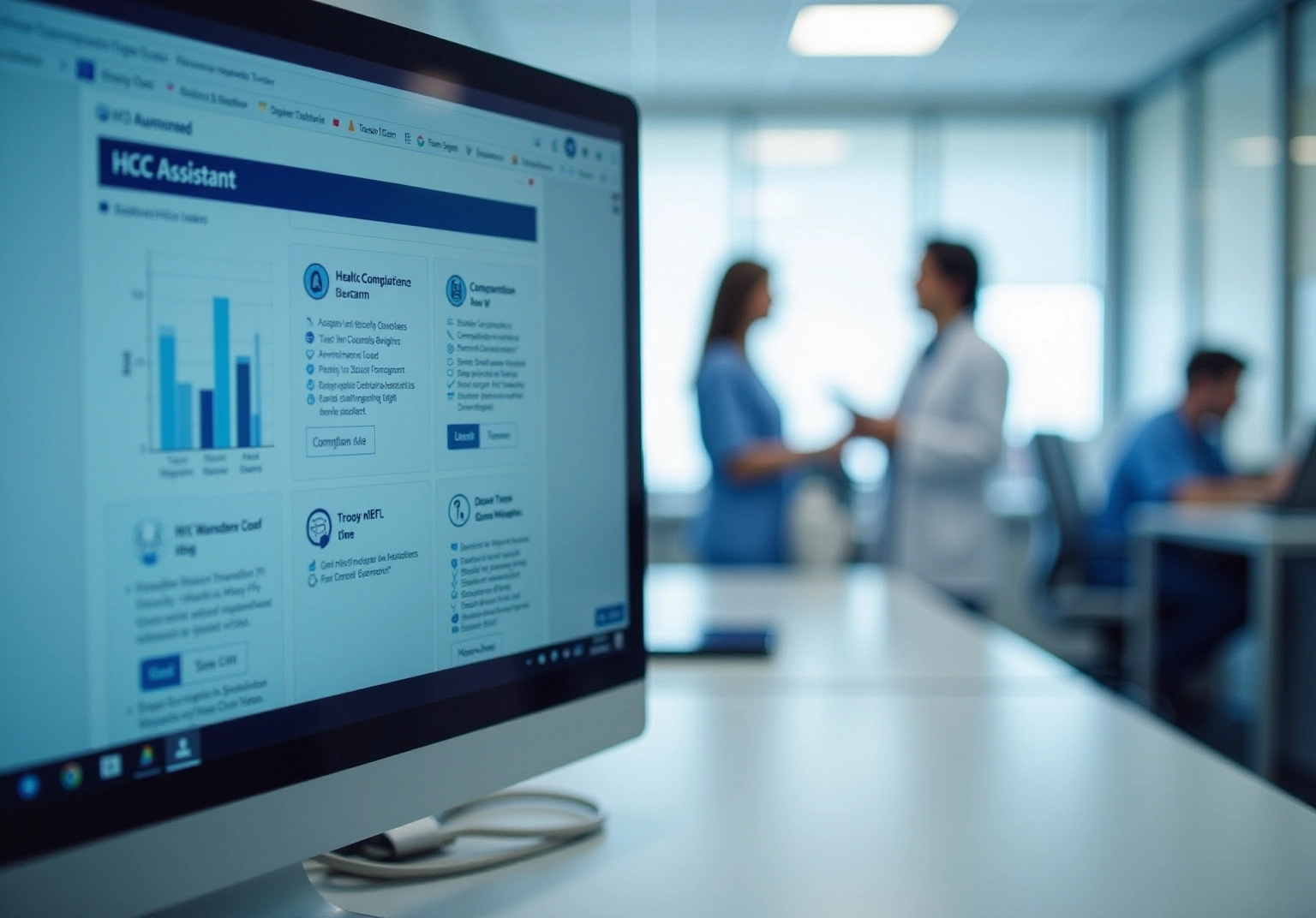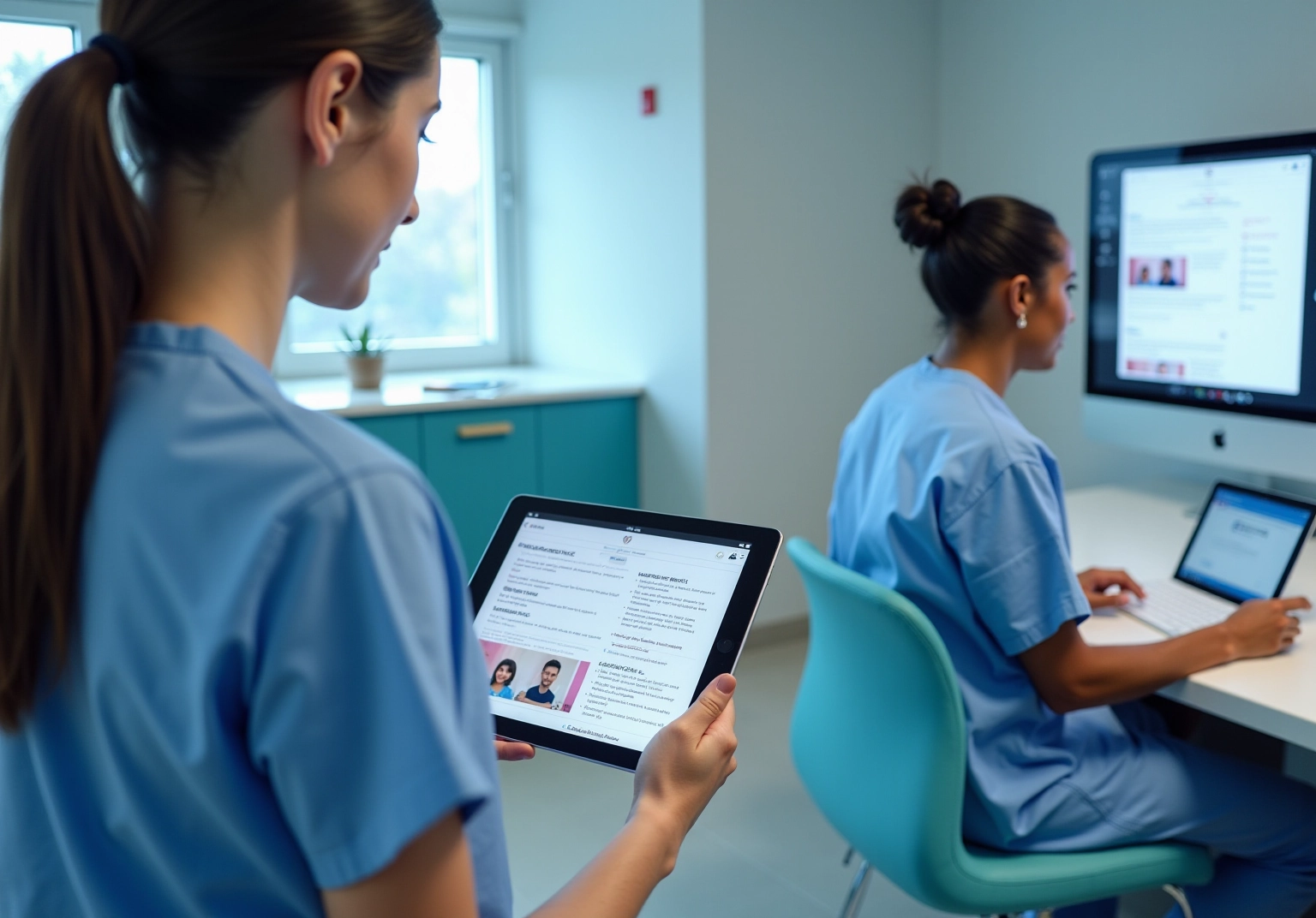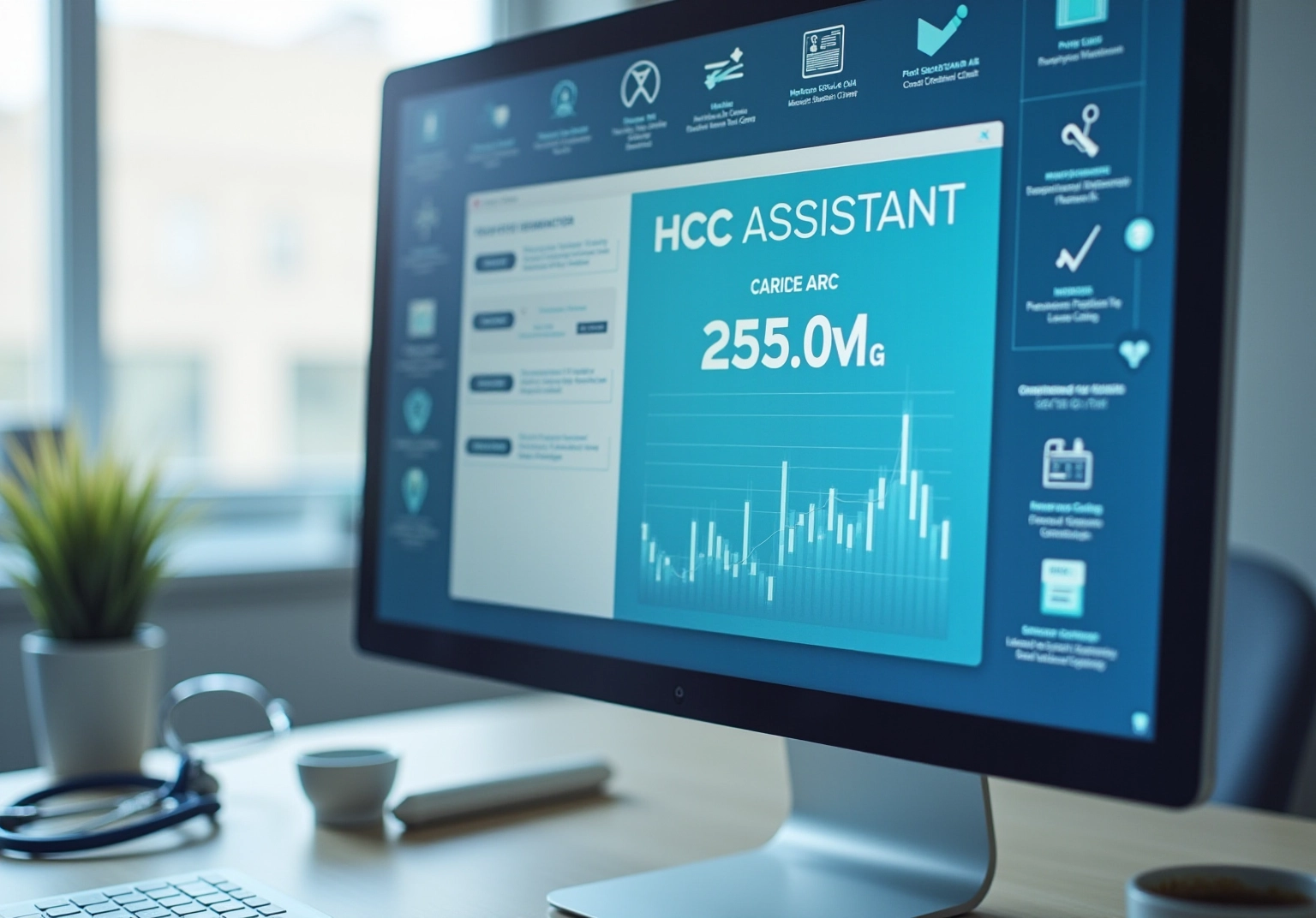
Automated medical coding addresses significant challenges faced by healthcare providers, such as administrative burdens and the need for enhanced accuracy. This innovative solution not only streamlines workflows but also mitigates errors, leading to improved financial performance through better reimbursement rates. Tools like the HCC Assistant empower healthcare professionals to concentrate more on patient care, ensuring compliance with regulatory standards. Ultimately, this approach maximizes funding from Medicare Advantage agreements, positioning healthcare providers for success.
The healthcare industry is undergoing a transformative shift as automated medical coding emerges as a vital tool for enhancing operational efficiency and accuracy. As regulations grow increasingly complex, the need for precise documentation becomes paramount. Healthcare providers have much to gain by integrating automated solutions into their coding practices. Yet, a pivotal question persists: how can these automated systems not only streamline processes but also ensure compliance and maximize reimbursements? This article explores the seven key benefits of automated medical coding, highlighting its profound impact on both healthcare providers and patient care.
The HCC Assistant revolutionizes the documentation landscape by streamlining the collection and examination of clinical data, which enhances automated medical coding by delivering accurate suggestions directly at the point of care. This automation simplifies the programming procedure of automated medical coding and significantly reduces the likelihood of errors, enabling healthcare professionals to achieve greater precision and effectiveness in their programming practices. By seamlessly integrating this tool into their workflows, providers can enhance their accuracy—an essential component for maintaining compliance and optimizing financial performance.
Inferscience’s Claims Assistant conducts a thorough gap analysis on claims files, recommending HCC codes that may have been overlooked. This ensures a more accurate representation of individual conditions and anticipated healthcare costs. Notably, research indicates that 32% of claim denials stem from classification errors, underscoring the critical role of automated medical coding in mitigating this issue through its real-time data analysis capabilities. This empowers healthcare specialists to consolidate client data and identify trends and inefficiencies in workflows, ultimately leading to improved outcomes for patients and increased revenue from Medicare Advantage agreements.
As Dr. Cynthia M. McDonald, AHIMA Board Chair, asserts, “Without precise classification, healthcare providers risk incorrect reimbursement, compliance issues, and ultimately, the integrity of patient care.” To effectively implement the HCC Assistant, organizations should consider establishing interdisciplinary workgroups to ensure comprehensive integration and ongoing training.
AI-driven programming solutions, such as those provided by Inferscience, significantly enhance operational efficiency by automating repetitive tasks and delivering real-time programming suggestions. This cutting-edge technology effectively mitigates human error, a prevalent issue in traditional manual programming processes. By harnessing the power of AI, healthcare professionals achieve not only faster classification but also greater precision—an essential factor for improving Risk Adjustment Factor (RAF) scores and optimizing funding through automated medical coding for Medicare Advantage members.
The integration of tools like the HCC Assistant within electronic health records (EHRs) illustrates this transformation, streamlining workflows and enabling providers to focus more on patient care. Organizations that have adopted these AI solutions report enhanced reimbursement rates, with some case studies demonstrating increases of up to 20% in RAF scores, underscoring the financial benefits of improved documentation accuracy.
As the healthcare landscape evolves, the significance of automated medical coding continues to grow, promising remarkable advancements in both efficiency and quality of care. One customer noted, ‘The HCC Assistant has revolutionized our billing process, allowing us to prioritize patient care while ensuring we capture all essential diagnoses for optimal reimbursement.

Automated programming solutions are essential for healthcare providers striving to maintain compliance with regulatory standards, particularly as the landscape evolves in 2025. Inferscience’s HCC Assistant is pivotal in ensuring that classification aligns with the latest guidelines, thereby significantly mitigating the risk of non-compliance.
Organizations that proactively monitor regulatory changes encounter up to 30% fewer compliance-related penalties, while those utilizing automated verification tools experience a similar 30% reduction in programming errors. This proactive approach not only safeguards professionals from potential penalties but also enhances their reputation in the industry.
Furthermore, automated systems enhance accuracy; research indicates that AI medical classification, such as that provided by Inferscience, can lead to a 27.7% reduction in coder workload and a 30-40% decrease in denial rates. As healthcare professionals prepare for the impending regulatory changes, which will profoundly impact the medical billing environment, investing in automated classification solutions like the HCC Assistant becomes a strategic imperative for operational efficiency and financial stability.

Maximizing reimbursements from Medicare Advantage contracts hinges on precise programming. Automated medical coding tools, like Inferscience’s Claims Assistant, are crucial in this endeavor. This innovative tool conducts real-time gap analysis on claims documents, recommending suitable Hierarchical Condition Category (HCC) codes, ensuring healthcare professionals capture all pertinent diagnoses and procedures. As a result, Risk Adjustment Factor (RAF) scores are elevated, as the Claims Assistant identifies codes that may have been charged by other practitioners or the individual’s primary care clinician in the previous calendar year.
Moreover, the Claims Assistant streamlines workflow for healthcare professionals by implementing automated medical coding, significantly enhancing the efficiency of the billing process. This enhanced precision translates into additional financial support, empowering caregivers to invest in improved client care and services. To discover how the Claims Assistant can elevate your accuracy in programming, request a demo today.

Automated programming significantly alleviates the administrative burden on healthcare professionals, empowering them to focus more on client care. Inferscience’s Care Gaps app enhances this process by automatically analyzing care gaps. This involves:
By optimizing the programming process and integrating care gap insights, providers can swiftly identify and document essential interventions, reducing time spent on paperwork and increasing time spent engaging with individuals. This transition not only elevates satisfaction among those receiving care but also improves the overall quality of service delivered, ensuring that vital health checks and screenings are not overlooked.
Care gaps frequently arise from resource shortages and limited access to information, making the functionality of the Care Gaps app crucial in addressing these challenges.

Automated medical coding tools significantly enhance data accuracy by reducing human error and ensuring comprehensive capture of relevant information. This increased precision is crucial for efficient management of individuals, allowing healthcare professionals to make informed choices based on trustworthy information. As a result, outcomes for individuals improve, leading to a higher standard of care.
For instance, the HCC Assistant from Inferscience streamlines clinical data collection and offers classification recommendations at the point of care. This enables healthcare professionals to concentrate more on care for individuals while optimizing funding from Medicare Advantage agreements.
This integration not only streamlines workflows and lessens administrative burdens but also enhances accuracy in programming through automated medical coding, ultimately delivering quality service to healthcare professionals and improving overall management outcomes for individuals.
The HCC Assistant exemplifies how AI-driven solutions can enhance HCC documentation, specifically addressing the challenges healthcare providers face in managing HCC tasks. Customer testimonials highlight the HCC Assistant’s ease of use and efficiency, reinforcing its impact on accuracy in documentation and management of individuals.

Automated programming solutions, such as Inferscience’s HCC Assistant, demonstrate the importance of automated medical coding in addressing a critical challenge in healthcare: the inefficiency of manual processes. Designed to be scalable, these solutions are suitable for healthcare organizations of all sizes, from small practices to large hospital systems. The adaptability of the HCC Assistant ensures that it can meet specific needs and workflows, making it an essential tool for any provider.
By employing sophisticated natural language processing (NLP) and smart rules, the HCC Assistant significantly reduces manual effort in automated medical coding workflows. This enables organizations to ingest, analyze, and unify both structured and unstructured data within their electronic health records (EHRs). Ultimately, this adaptability allows all suppliers to leverage the efficiencies and precision that automated medical coding provides. As a result, healthcare providers can focus more on their clients while maximizing funding from Medicare Advantage agreements.

The seamless integration of automated programming tools with electronic health records (EHRs) is vital for optimizing their efficiency. By embedding tools like Inferscience’s HCC Assistant directly into EHR systems, healthcare providers can analyze both structured and unstructured data from patient charts. This approach streamlines workflows and guarantees that essential HCC recommendations are readily available at the point of care. Such integration not only enhances usability but also significantly boosts programming accuracy and facilitates effective risk adjustment, ultimately resulting in improved RAF scores.

Automated programming solutions significantly enhance consistency by standardizing the development process throughout the organization. This consistency is crucial for maintaining quality in healthcare services, ensuring that all practitioners adhere to the same guidelines and practices. By leveraging AI and natural language processing (NLP) technologies, healthcare organizations can streamline risk adjustment workflows, reduce human error, and improve HCC documentation. These advancements not only elevate overall performance and compliance but also enhance efficiency among suppliers, ultimately leading to improved Medicare reimbursements.

The landscape of automated programming is rapidly transforming, driven by continuous technological advancements. Healthcare professionals must remain vigilant and well-informed about these innovations to effectively utilize the latest tools and methods that enhance documentation processes. Inferscience’s Claims Assistant exemplifies this evolution by conducting real-time gap analysis on claims files, suggesting HCC codes that may have been overlooked by other providers or the primary care provider in the previous calendar year. This proactive approach not only improves programming accuracy but also ensures that all relevant codes are submitted, providing Medicare and health plans with a clearer understanding of individual conditions and anticipated healthcare costs.
Embracing future innovations, such as the Claims Assistant, positions organizations to maintain a competitive edge in the healthcare sector. The integration of AI-driven solutions has been pivotal, with automated medical coding systems now capable of processing electronic health information to generate final code sets without human intervention. This shift has been supported by over a decade of advancements in medical automation utilizing artificial intelligence (AI), which has demonstrated a significant increase in accuracy rates, often exceeding the industry benchmark of 95% for human coders. As healthcare providers adopt automated medical coding along with these advanced classification technologies, they can streamline workflows, alleviate administrative burdens, and ultimately focus more on patient care while maximizing funding from Medicare Advantage contracts. Moreover, the importance of quality assurance in medical documentation cannot be overstated, as it is crucial to avoid costly denials post-billing. Staying ahead of these advancements is vital for organizations seeking to enhance their practices in automated medical coding and ensure compliance in an ever-evolving regulatory landscape.

Automated medical coding emerges as a transformative force in the healthcare industry, significantly enhancing operational efficiency and ensuring accuracy in documentation. By integrating tools such as the HCC Assistant and leveraging AI-driven solutions, healthcare providers can streamline their coding processes, reduce administrative burdens, and ultimately redirect their focus towards delivering quality patient care. This strategic shift not only optimizes financial performance through improved reimbursements but also fortifies compliance with evolving regulatory standards.
Throughout this article, the key benefits of automated medical coding have been underscored, including:
The application of AI technology substantially mitigates human error, enabling healthcare professionals to capture all relevant diagnoses and procedures, which is essential for precise Risk Adjustment Factor (RAF) scoring. Moreover, the seamless integration of automated coding tools within electronic health records (EHRs) fosters a more efficient workflow, benefiting both providers and patients alike.
As the healthcare landscape continues to evolve, embracing automated medical coding solutions becomes imperative for organizations striving to maintain a competitive edge. Investing in these advanced technologies not only amplifies operational efficiency but also ensures that providers can adeptly navigate the complexities of an increasingly intricate regulatory environment. By prioritizing automation in coding practices, healthcare organizations can enhance patient outcomes, streamline processes, and ultimately cultivate a more effective healthcare system.